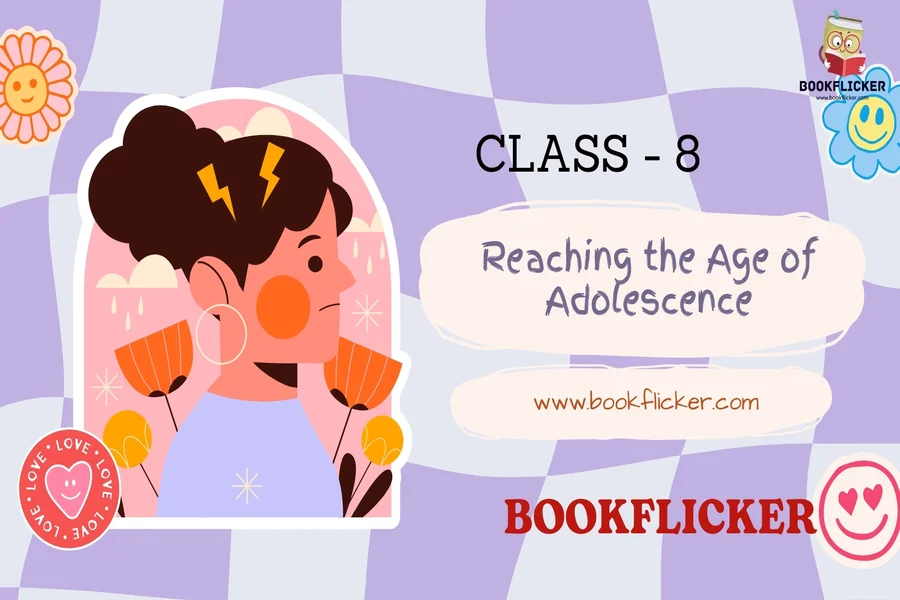Reaching the Age of Adolescence: Class 8 Handwritten Notes
Reaching the age of adolescence is a significant developmental stage for every individual, especially for students in Class 8. Adolescence marks the period of transition from childhood to adulthood, where numerous physical, emotional, and psychological changes occur. Understanding these changes is essential for young learners to navigate through this phase with confidence. In this article, we will explore the key aspects of adolescence, and how “Reaching the Age of Adolescence” can be better understood with Class 8 handwritten notes.
What is Adolescence?
Adolescence refers to the period in human development when children experience rapid physical, emotional, and social growth. This phase typically begins between the ages of 10 and 13 and can last until the early twenties. For Class 8 students, it is important to recognize the signs of adolescence, such as puberty, changes in body structure, and the development of secondary sexual characteristics.
The Physical Changes of Adolescence
One of the most prominent aspects of adolescence is the physical transformation. These changes occur due to hormonal shifts, particularly the increase in sex hormones like estrogen and testosterone.
For Class 8 students, handwritten notes on adolescence should include key topics like:
| Physical Changes | Description |
|---|---|
| Puberty | Onset of physical changes, including growth spurts and the development of sexual organs. |
| Menstruation in girls | Marks the start of menstruation for females, an essential milestone in adolescence. |
| Body hair growth | Increased body hair, including facial hair in boys and underarm hair in both genders. |
| Height and Weight Growth | Rapid increase in body size and physical strength. |
Emotional and Psychological Changes During Adolescence
As adolescents undergo physical changes, they also experience emotional and psychological growth. Class 8 handwritten notes can help students understand the following aspects:
| Emotional and Psychological Changes | Description |
|---|---|
| Mood swings | Hormonal changes lead to fluctuations in mood, affecting behavior and relationships. |
| Search for identity | Adolescents begin to question their identity, values, and life goals. |
| Independence | Desire for autonomy grows, often leading to conflicts with parents and teachers. |
| Peer Pressure | Strong influence of peers, affecting decisions and social interactions. |
Social Changes in Adolescence
In addition to physical and emotional changes, adolescence brings about various social adjustments. Class 8 students must recognize the importance of:
| Social Changes | Description |
|---|---|
| Changing relationships | Adolescents form new relationships, develop friendships, and experience romantic feelings. |
| Role of media and technology | Social media and technology have a significant influence on how adolescents interact and form identities. |
Educational Tips for Class 8 Students on Adolescence
To help Class 8 students effectively understand the topic of adolescence, they can benefit from creating and reviewing handwritten notes on adolescence. These notes should focus on the following:
| Tips for Class 8 Students | Description |
|---|---|
| Use simple diagrams | Draw diagrams to represent physical changes during puberty. |
| Summarize key terms | Summarize important terms like puberty, menstruation, and growth spurts. |
| Communicate with trusted adults | Encourage open communication with parents and teachers about emotions and changes. |
| Examples of peer influence | Provide examples of how peer pressure can impact decision-making. |
Conclusion
Reaching the age of adolescence is an exciting, yet challenging period in a young person’s life. For Class 8 students, understanding the physical, emotional, and social aspects of adolescence can help them make informed decisions as they navigate this transformative phase. By creating detailed handwritten notes on reaching the age of adolescence, students can better grasp these changes and their effects on their lives.
To help in this process, students can refer to the following resources to enhance their learning experience:
This will ensure they not only perform well academically but also develop the emotional intelligence to cope with the changes they are undergoing.
